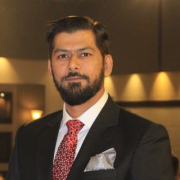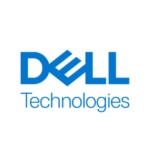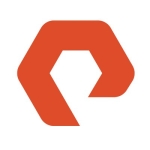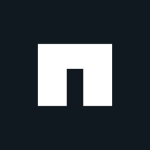What is our primary use case?
We used the solution exclusively for block storage. Over time, it added compression features and now even NVMe.
It's perfectly suited for an on-premise solution or for providing a base for cloud solutions, VMware workloads, IBM i-series, IBM AIX, IBM Power, Linux, and Windows compute. In other words, the complete server stack. It is something others actually can't offer. All of this can be operated from within the same solution.
It definitely has a strong plus in environments where you actually have such different server solutions in place.
How has it helped my organization?
It's a really reliable, powerful platform. It's a mature product. It's like a BMW that evolves consistently.
There is no need to change or buy another company's solution. It came with storage virtualization and options to move/migrate volumes around and migrates easily even before you actually have svMotion on VMware.
It can be stretched. There is a Site Recovery Adapter. It has backup integration using flash copies. You can build a disaster recovery solution around it. IBM has its famous Redbooks where you can enter in the best practices. You name it, they've got it!
What is most valuable?
It offers separate IO Modules for connectivity additions, for compression to offload the CPU.
It offers storage virtualization to ease migrations. You can build storage clusters and migrate data and easily configure partner relationships.
The solution offers excellent performance! Flashcopies come in handy with backup solution integrations. The site recovery adapter for VMware Site recovery manager integration is great. Everything is working like a charm.
I've used it in a banking environment in combination with VMware Site Recovery Manager and Site Recovery Adapter (SRA) - a wonderful combination. It saves you headaches building a recovery plan. Most of all, it works.
What needs improvement?
IBM's solution has come a long way and has had different milestones/features have been introduced. I would position the 7200 in the upper midrange class as it has lots of features - more than, for example, EMC Unity/VNXe. It doesn't lack anything, really. One could argue that NAS or S3 is not available to it, but I prefer other types of storage optimised for that job.
It is slightly more expensive, however, it all depends on your supplier. Licenses are volume-based. Larger companies with more TB usually are better off as the price per TB decreases the bigger you go. I would definitely recommend this platform!
For how long have I used the solution?
I've known the predecessors of the IBM Flashsystem, being the Storwize 7200 (Gen 1 to 3) and SVC Front End Servers, from the time they were running on code 6.2 way back in 2011.
What do I think about the stability of the solution?
We have never ever had an incident with it making the infra go on its knees, nor did we have any datacorruption ever.
All storage solutions have bugs and all have their correctives that might not address an issue on the first occurance or under all circumstances. When the system is stressed and under some specific (nonetheless rare) conditions , the developped code might trigger a reboot of a controller node to avoid data corruption. A system with 2 controllers is resilient enough on its own and a reboot of a node to prevent e.g. cache merge problems or alike is not harmfull.
To me, the need to evict a controller node and warm boot it is actually intentionally a safety precaution that avoids data corruption, something we all want to stay out as much as possible. It's as reliable as any other product in that respect. All solutions that I know off like DELL EMC Unity, Fujitsue DX-series or 3PAR Storeserv respond in the same manner to avoid datacorruption. I've seen it the most on the SVC (code 7.1/7.2 around 2012/2013 , but not on the Storewize v7000 Gen1 to Gen2+ solutions, though I have to admit they all had about 40 to 50% of the load of the SVC.
What do I think about the scalability of the solution?
You can build clusters with it and IO Groups.
How are customer service and support?
IBM is able to deliver a support organization with well-trained people. IBM's redpieces/papers and solutions designs are published and offer real references. You can develop your own skills and become an expert or fallback on IBM Supreme Support if you feel less comfortable.
How would you rate customer service and support?
Which solution did I use previously and why did I switch?
We used IBM FastT/DS Storage (LSI Logic) with/without IBM SVC and IBM v7000 Gen1/Gen2/Gen3, shifting from legacy/traditional storage to storage virtualization.
How was the initial setup?
It's quite intuitive. I always enjoyed that, whatever operation you initiated on its Webvinterface, it generated the command, and you actually see which command is being executed. I love it! It surely helps you get acquainted with the product. The setup with many modules and ports requires some design, as on any midrange solution. You get a nice template to initiate it and off you go.
What about the implementation team?
I've done it myself after all the experience I've had.
What was our ROI?
At the end of the lifecycle, the migrations and options you have mean that it doesn't require several storage solutions if you have mixed server solutions like Mainframe, i-Series, AIX, IBM PowerPC, VMware, Desktop Virtualisation, et cetera.
Also, the superb integration with VMware SRM and its Site Recovery Adapter makes it a seamless solution to make your infra resilient.
What's my experience with pricing, setup cost, and licensing?
It's not as expensive as HPE Storeserv, however, it is more expensive than Netapp FAS or Dell Compellent.
Which other solutions did I evaluate?
We looked at the Netapp FAS all-flash series, Dell Compellent, HPE StoreServ (7200/7400, 8200/8400, and 10500), and Dell EMC VNXe/Unity
What other advice do I have?
It's a more complete solution and really up to mixed infrastructure and resiliency and has a lot to offer on scalability too
Which deployment model are you using for this solution?
Hybrid Cloud
If public cloud, private cloud, or hybrid cloud, which cloud provider do you use?
Other
Disclosure: My company does not have a business relationship with this vendor other than being a customer.















